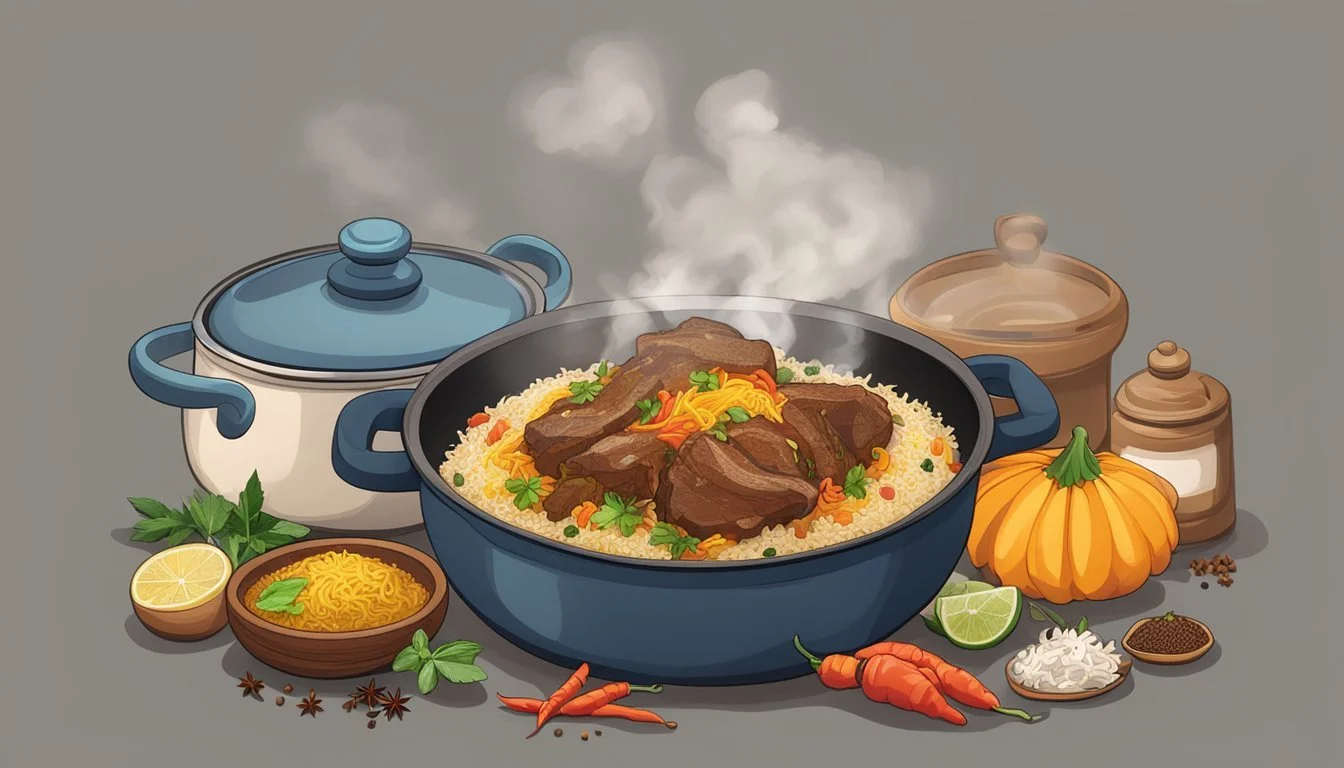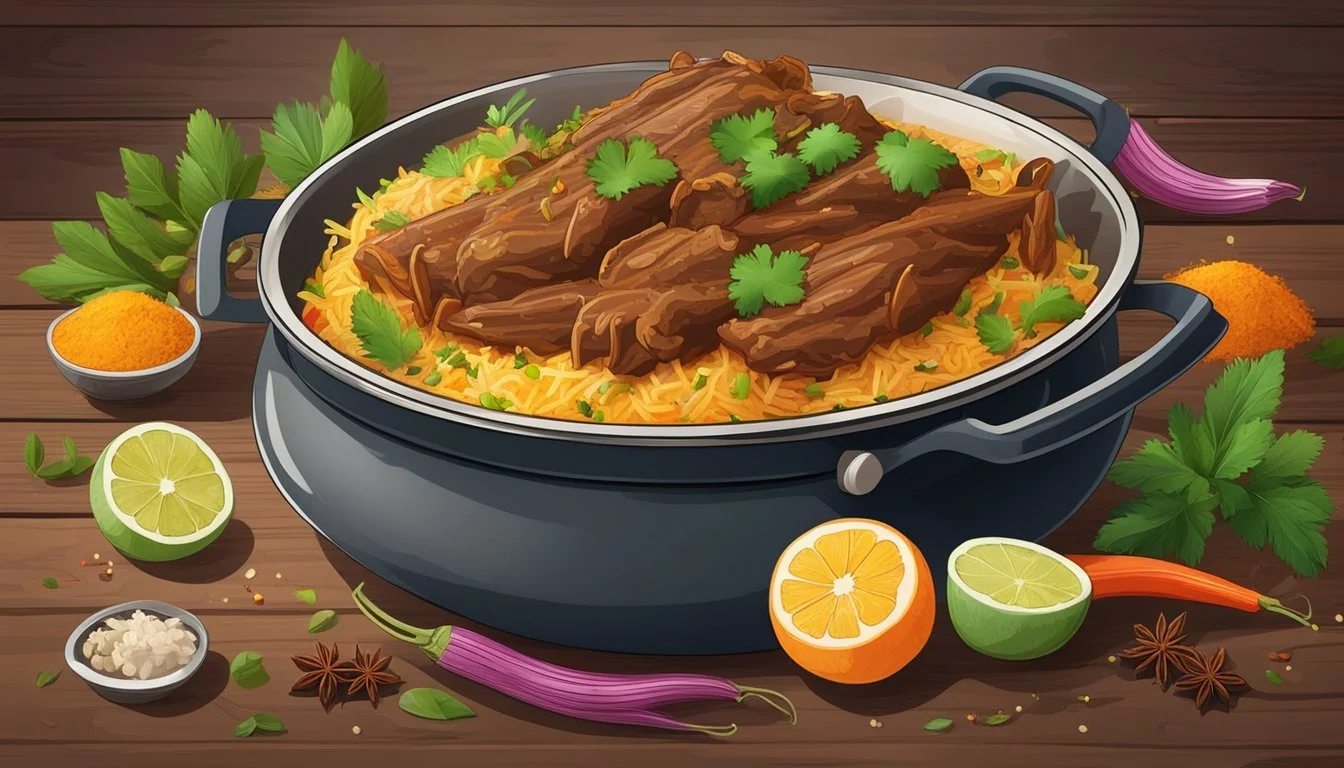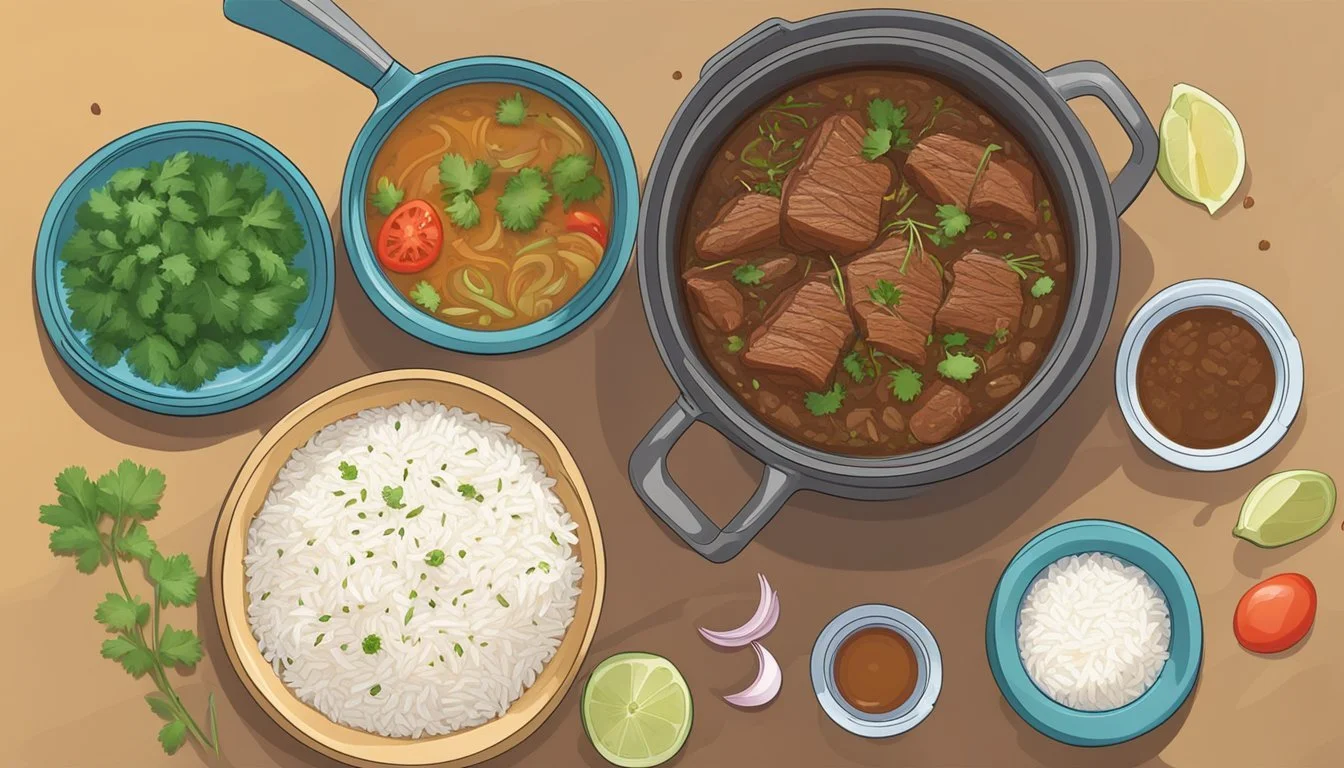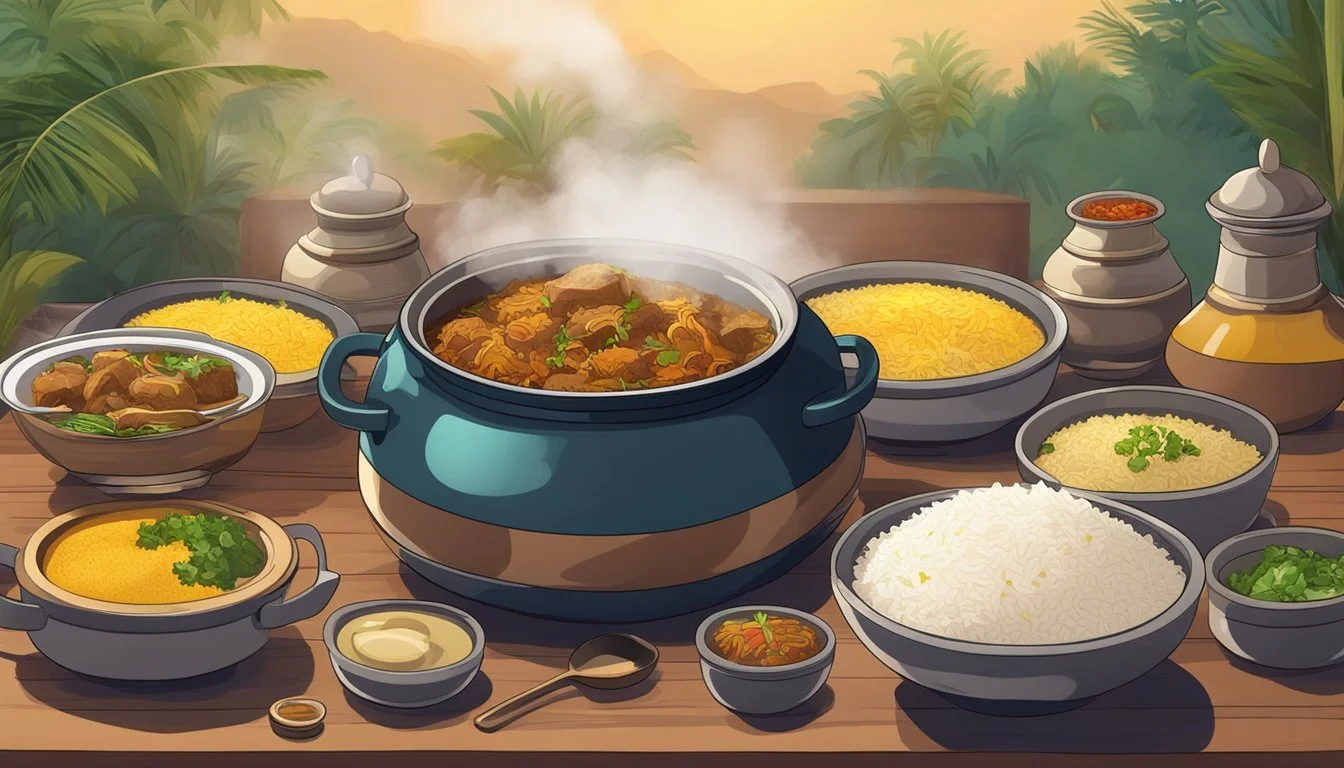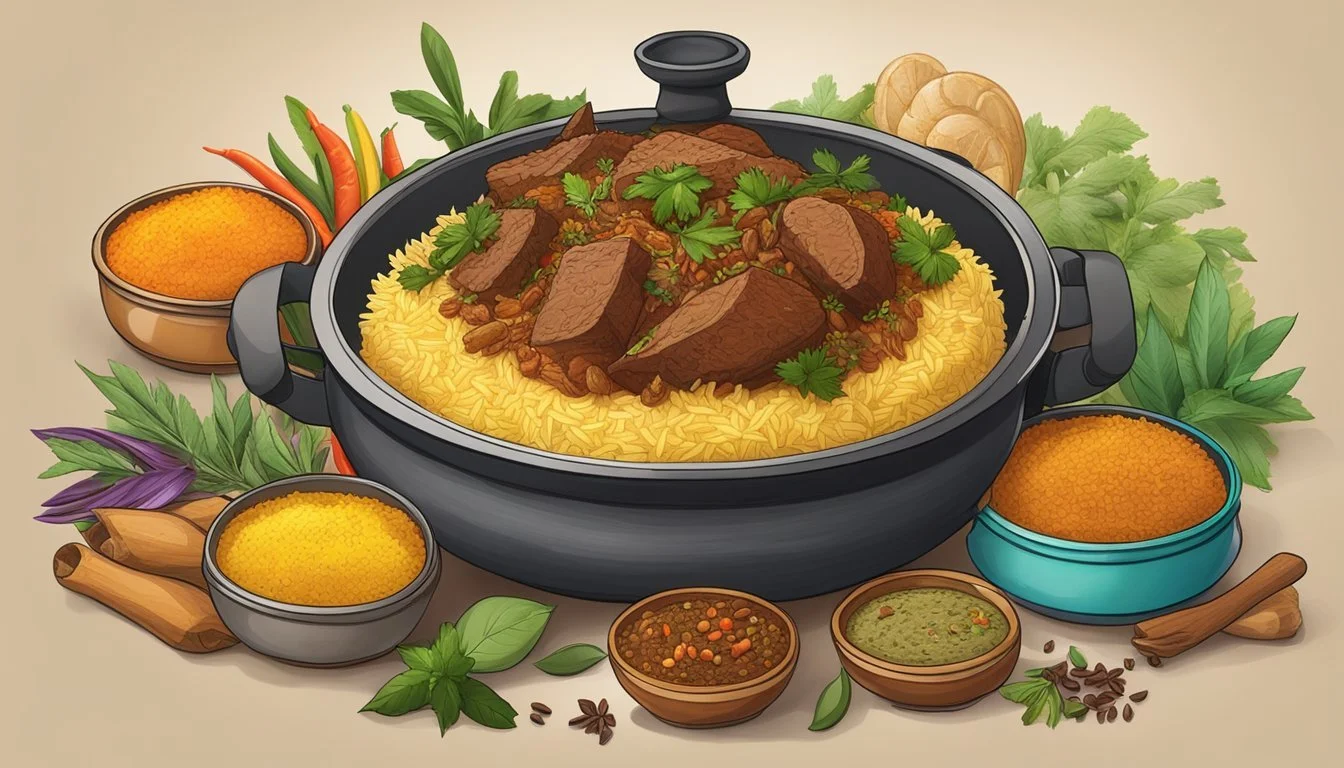How Long Does Beef Biryani Last?
Storage Tips & Shelf Life
When it comes to savoring the rich and aromatic flavors of beef biryani, a common concern is its shelf life. The lifespan of this delectable dish can significantly affect how you plan your meals and leftovers. Beef biryani, when stored properly in an airtight container in the refrigerator, can last for up to 4-5 days. This ensures that the intricate blend of spices and tender beef remains enjoyable and safe to eat.
Storing beef biryani in the freezer can extend its life further. Properly frozen, it can last for about two to three months without compromising much on taste and texture. It's essential to ensure it's tightly sealed to prevent freezer burn and maintain its rich flavors.
Reheating beef biryani should be done thoroughly to ensure any bacteria are killed. It’s best to reheat it in a microwave or on the stovetop until it's piping hot throughout. This practice guarantees that you can continue enjoying your beef biryani safely and deliciously, even days after it was first prepared.
Understanding Biryani
Biryani is a rich and flavorful dish that has significant cultural importance. It's known for its aromatic spices and various preparation methods which differ between regions.
Origins and Popularity
Biryani has a storied history rooted in the Indian subcontinent. Believed to have been brought to India by Persian travelers and merchants, it has since become a staple in both Indian and Pakistani cuisines. Historically, it was a dish favored in royal kitchens and has now trickled down through generations, becoming a beloved meal in many households.
The appeal of biryani lies in its unique combination of spices, rice, and meat, typically beef, chicken, or lamb. This aromatic dish is often prepared with ingredients like cloves, cardamom, and saffron, which give it a distinctive flavor and vibrant color. Its popularity spans across the globe, delighting food enthusiasts everywhere.
Types of Biryani
There are several regional variations of biryani, each with its unique twist. Hyderabadi Biryani from India is famous for its spicy flavor, often made with basmati rice and marinated meat. Sindhi Biryani from Pakistan is another popular version, known for its tangy flavor derived from the use of yogurt and tomatoes.
Kolkata Biryani often includes potatoes and is slightly sweeter compared to its counterparts. Another variant is Lucknowi Biryani, which follows the "dum" method of slow cooking, bringing out rich flavors. Each type of biryani showcases a distinct blend of spices and cooking techniques, making the dish versatile and universally appealing.
Essential Ingredients for Beef Biryani
Beef biryani's rich, complex flavors come from a harmonious blend of spices, proteins, vegetables, and high-quality basmati rice. Each component plays a crucial role in creating this aromatic dish.
Spices and Herbs
Spices are the heart of beef biryani, imparting both aroma and flavor. Essential spices include cumin, coriander, cardamom, cinnamon, turmeric, and cloves. These spices are often combined to make a garam masala mix that adds depth to the dish.
Ginger and garlic are used for their pungent, aromatic qualities and should be freshly minced. Green chilies add heat, while cilantro, mint, and lemon are added at the end for a fresh, zesty finish. It's also common to use whole spices like cloves and star anise to infuse the dish with rich flavors.
Proteins and Vegetables
Beef is the main protein in this dish, typically cut into bite-sized pieces. The beef should be marinated in yogurt along with the spice mix to tenderize the meat and infuse it with flavor. This step is crucial for ensuring the meat is juicy and succulent.
Onions, tomatoes, and potatoes are commonly used vegetables. Onions should be browned to a caramelized state, adding a slightly sweet, complex flavor. Tomatoes provide a tangy kick and should be cooked until they integrate into the sauce. Carrots and peas can also be included for added texture and richness.
Rice Selection
Choosing the right rice is vital for a perfect beef biryani. Basmati rice is the preferred type due to its long grains and fluffy texture. The rice should be rinsed and soaked before cooking to ensure it cooks evenly.
Boil the rice until it's about 75-80% done to ensure it finishes cooking through but does not become mushy. Layering the partially cooked rice with the beef and spices allows the flavors to meld together. A final steaming ensures the rice absorbs the aromatic spices and remains light and airy.
Using these quality ingredients ensures that each bite of beef biryani is an authentic and flavorful experience.
Preparing Beef Biryani
Preparing Beef Biryani involves marinating the beef, layering ingredients, and following a precise cooking method to achieve the rich, aromatic flavors. Each step is critical to master to ensure a delicious and authentic dish.
Marination Process
Marination is fundamental to tenderizing the beef and infusing it with flavor. Start by washing the beef and cutting it into chunks. Marinate it with yogurt, ginger garlic paste, Shan biryani masala, and salt. Allow the beef to absorb these spices for at least two hours, or preferably overnight in the refrigerator.
This step ensures the meat is tender and flavorful. The yogurt helps soften the meat while the spices permeate deeply. Use a spoon to mix the marinade evenly, ensuring all beef pieces are coated.
Layering Technique
Layering is essential for achieving the right texture and flavor balance. Begin by cooking the beef mixture until nearly tender. Simultaneously, parboil the rice with water, salt, and whole spices like cardamom pods.
In a large pot, layer half of the parboiled rice on the bottom. Over this, spread the beef mixture, ensuring an even layer. Top with the remaining rice. Add fried onions, ghee, and a few drops of food color for hues. Repeat until the ingredients are used up, finishing with a rice layer.
Cooking Method
The cooking method finalizes the flavors. Cover the pot tightly to trap steam, which cooks the biryani to perfection. You can use a slow cook method on low heat for about 30-40 minutes. Alternatively, if using a pressure cooker, cook until the beef is tender and the rice is fully cooked.
During the cooking process, avoid stirring to maintain the layers. Once done, let the biryani sit for 10 minutes before fluffing the rice with a fork. Serve it hot, pairing with raita or any preferred sauce. This method ensures a rich, flavorful biryani with tender beef and perfectly cooked rice.
Serving and Accompaniments
Serving beef biryani with the right side dishes and presenting it well elevate the dining experience. Each side dish enhances specific flavors, while good presentation ensures an appealing meal.
Ideal Side Dishes
Mint Chutney: This is a fresh blend of mint leaves, green chili, and Greek yogurt. It adds a refreshing taste that balances the spiciness of the biryani masala.
Raita: A cooling mixture of Greek yogurt, cucumber, and spices. The creamy texture provides a soothing contrast to the rich flavors of the biryani.
Pickled Onions: Sharp and tangy, they add a zesty kick to each bite, complementing the depth of the biryani's spices.
Mirchi Ka Salan: A traditional Pakistani curry made with green chili peppers and tamarind. It adds heat and tanginess, enriching the meal.
Salad: A simple kachumber salad with chopped tomatoes, cucumbers, and onions, dressed lightly. It refreshes the palate and adds a crunchy texture.
Onion Bhajis: These crispy, fried onion fritters introduce a delightful crunch, perfect as an appetizer or as an accompaniment.
Presentation Tips
Garnish: Use fresh mint leaves or coriander to garnish the top of the biryani. It adds a pop of color and a burst of fresh flavor.
Caramelized Onions: Sprinkle caramelized onions over the biryani for added sweetness and texture.
Serving Platters: Serve the biryani in a large, shallow dish to showcase the layers of rice and meat.
Side Dish Placement: Arrange side dishes like chutneys and pickles in small bowls around the serving platter. This makes it easy for guests to help themselves.
Accompaniments: Place bowls of mint chutney, raita, and pickled onions nearby. This ensures each serving is enhanced with the right accompaniments.
Storage and Shelf Life
Proper storage of beef biryani ensures it remains safe to eat and retains its flavor. The following guidelines will help you maximize its shelf life in both refrigeration and freezing conditions, along with tips on how best to reheat it.
Refrigeration
Beef biryani can be stored in the refrigerator for up to 4 days. Once cooked, let the biryani cool down to room temperature before placing it in the fridge. Storing it while still hot can cause condensation and increase the risk of bacterial growth.
Store biryani in airtight containers to maintain its moisture and prevent absorbing odors from other foods. Label the containers with the date so that you can keep track of how long the biryani has been stored.
Leftover beef biryani should not be kept in the fridge for more than the recommended 4 days to ensure food safety. After this period, the risk of bacterial contamination increases, which can lead to foodborne illnesses.
Freezing Method
Freezing beef biryani can extend its shelf life up to 2 months. To freeze, spread the biryani in a single layer on a baking sheet and place it in the freezer until frozen solid. This prevents the rice from clumping together.
Once frozen, transfer the biryani to freezer-safe bags or airtight containers. Remove as much air as possible from the containers before sealing to prevent freezer burn. Label the containers with the date and type of food for easy identification.
When ready to use, transfer the biryani from the freezer to the refrigerator to thaw overnight. This gradual thawing process helps maintain the texture and flavor of the biryani.
Reheating Tips
Reheating beef biryani properly is crucial to retaining its taste and ensuring it is safe to eat. For the best results, add a splash of beef broth or water before reheating to prevent the rice from drying out.
Use a microwave or stovetop to reheat the biryani, ensuring it reaches an internal temperature of at least 165°F (75°C) to eliminate any potential bacteria. Cover the dish while reheating to distribute heat evenly and retain moisture.
Avoid reheating biryani more than once; repeated heating and cooling can increase the risk of bacterial growth. Only reheat the portion you plan to consume immediately.
Nutrition and Health Considerations
Beef biryani offers a blend of nutritional elements that can be beneficial for health when consumed in moderation. Here we explore the caloric information and dietary benefits and concerns of this popular dish.
Caloric Information
A typical serving of beef biryani can range from 400 to 600 calories. The calorie count varies significantly depending on the ingredients and cooking methods used.
Traditional beef biryani often includes ghee or oil, which contributes significantly to its high calorie content. Including lean cuts of beef and reducing the amount of oil can lower the calorie count.
Rice, a primary component in biryani, provides the majority of the calories through carbohydrates, essential for energy. Biryani also includes fats and proteins, contributing to its rich and filling nature.
Monitoring portion sizes is crucial, especially for those on calorie-restricted diets.
Dietary Benefits and Concerns
Beef biryani offers several dietary benefits, particularly in its protein content. Beef is a rich source of protein, essential for muscle repair and growth.
The inclusion of spices like turmeric, chili powder, and garlic introduces antioxidants and anti-inflammatory properties, enhancing overall health.
On the downside, traditional biryani tends to be high in fat, primarily due to ghee or substantial oil usage. This can be a concern for individuals managing heart health or those on low-fat diets.
Carbohydrates from rice can be beneficial for those needing to restore glycogen levels post-exercise, but they may pose a concern for individuals monitoring their blood sugar levels.
For a healthier version, consider making modifications, such as using brown rice instead of white, trimming excess fat from the beef, or limiting the use of high-fat ingredients.
Cultural Significance
Beef biryani isn’t just a beloved dish for its rich flavors; it’s deeply embedded in cultural traditions and ceremonies across various regions. It often signifies communal harmony and culinary excellence, marking special occasions with its presence.
Biryani in Festivals and Celebrations
In both Pakistan and India, biryani holds a treasured place in festivals such as Eid and weddings. During Eid al-Adha and Eid al-Fitr, families gather to enjoy this aromatic rice dish made with mutton or beef, symbolizing joy and togetherness.
Weddings frequently feature biryani as the centerpiece, accentuating the festive spirit with its fragrant spices and tender meat. The communal act of sharing biryani during these events emphasizes cultural unity and familial bonds.
Regional Variations and Influences
Different regions put their unique stamp on beef biryani, reflecting local tastes and ingredients. In Kerala, the Malabar Biryani blends local spices like pepper and star anise with the succulent beef, resulting in a fiery, flavorful dish.
Hyderabadi biryani boasts of layered flavors with ghee, garam masalas, and crispy fried onions. Central Asian influences, seen in dishes like pilaf, further enrich biryani’s heritage. Sweet dishes like zarda and kheer often accompany biryani, adding a sweet contrast to the spicy main course.
Online Resources and Further Reading
Discover a variety of resources to learn more about storing and preparing beef biryani. Several websites and cookbooks cater specifically to this topic, offering recipes, storage tips, and more.
Websites and Food Blogs
For extensive recipes and storage tips, websites and food blogs are invaluable. Sites like My Heart Beets provide step-by-step instructions and useful tips like how to properly store beef biryani after cooking. Beef Biryani - Chisel & Fork offers detailed cooking methods and storage guidance, such as cooling and refrigerating biryani for optimal shelf life.
Pinterest is another excellent resource. Numerous pins lead to diverse blogs and instructional videos, showcasing various regional takes on beef biryani, such as Indian and Pakistani beef biryani. For those interested in alternative biryani dishes, look for related recipes like chana pulao.
Cookbooks and Guides
Cookbooks offer a comprehensive approach to making and storing beef biryani. Publications like Madhur Jaffrey's Indian Cooking and The Essential Indian Instant Pot Cookbook give authoritative recipes and methods. These guides often include sections dedicated to ingredient preservation and proper storage practices.
For guidance on how long beef biryani can last, these books typically recommend refrigeration tips to extend freshness. Additionally, guides from authors specializing in Indian and Pakistani cuisine not only offer recipes but also tips on ingredient substitutions and enhancements to ensure the dish remains flavorful even after refrigeration.

